How dangerous can falls be in old age?
Specialist topics
How dangerous can falls be in old age?
There is a certain risk of falling at any age. It is often sporting activities or simply carelessness in everyday life that lead to falling. This everyday risk is compounded by falls that occur because the ability to avoid them is lost. This is often the case with older people. Falls in old age can sometimes have serious consequences.
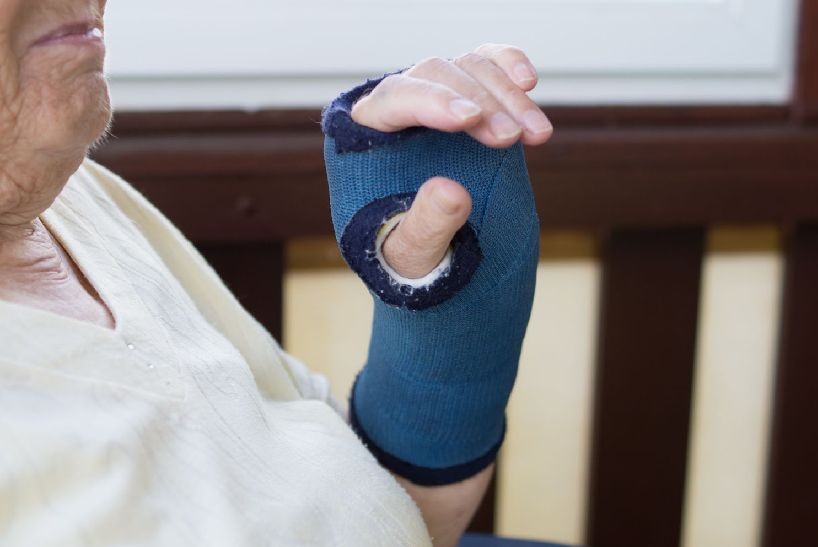
If Swiss people over the age of 65 fall, eight out of ten cases are caused by a fall. One in two of these falls occur within their own four walls. Classic tripping hazards such as doorsteps or fallen objects are not to blame here. Most falls happen on level ground, usually while walking.
What are the reasons for falls in old age?
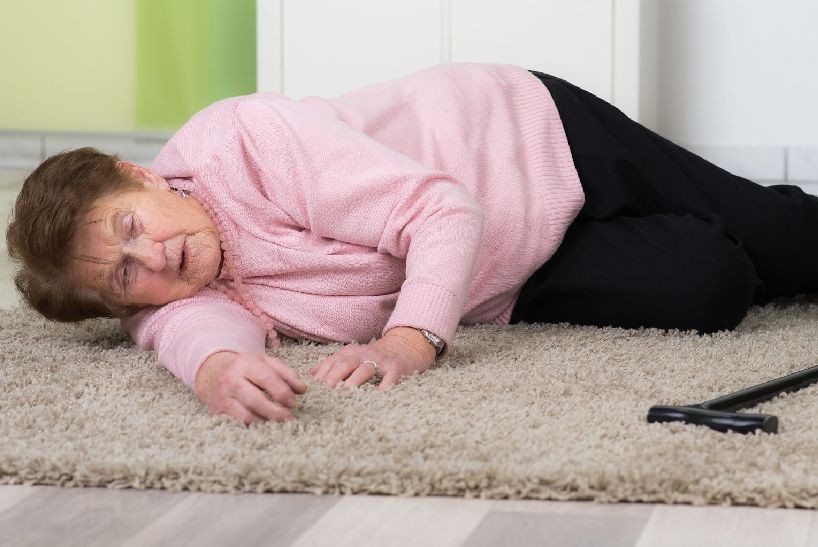
There are numerous reasons why the risk of falling can increase with age. One possible reason is a decrease in vision, for example due to cataracts or glaucoma or age-related retinal degeneration. This can result in blurred vision, a restricted field of vision and impaired perception of light and dark. Small tripping hazards are then overlooked more frequently.
Hearing also plays an important role. Around one in three Swiss over the age of 65 is hard of hearing. Even a slight hearing loss increases the risk of falling threefold. The reason for this is that significantly more brain cells are activated to compensate for the hearing problems. These are no longer available for other tasks such as enabling a safe gait.
Cognitive abilities can also decline. If people talk or look at their surroundings while walking, their ability to concentrate, which may already be impaired, is impaired. A fall can occur much more quickly.
An irregular gait is also one of the main causes of falls in old age. Even small deviations in stride length can significantly increase the risk. A variation of just 1.7 centimeters doubles the risk of falling. While younger people can often balance these deviations without any problems, this becomes considerably more difficult with increasing age.
It is not uncommon for those affected to fall because they are no longer able to keep their balance or suddenly feel dizzy. Around 30 percent of Swiss people state that they regularly feel dizzy. Every second person over 70 even suffers at least one dizzy spell a year. This is often the result of an age-related disorder of the vestibular system.
What are the effects of falls in old age?
Older people may not always be able to keep their balance, depending on their individual physical condition. This can result in an increased risk of falling. If a fall does occur, the body reacts with certain protective measures. However, these can also be impaired in old age. This increases the risk of painful consequences, including:
- bruises
- sprains
- fractures
- wounds
- in the worst case, death
With luck, a soft surface such as a soft floor at home or a meadow outside will cushion the fall. However, this is often of little use to older people.
From around the age of 40, a person's bone mass slowly starts to break down. The average loss is around one percent per year. The older a person gets, the more porous their bones become and the risk of injury from falls increases.
If there is an imbalance in bone metabolism, this degradation accelerates. Osteoporosis develops and the bones lose additional strength. This process is completely painless. This is why the diagnosis is often only made once an injury has already occurred as a result.
Around 20 percent of Swiss women and seven percent of Swiss men over the age of 50 are affected by osteoporosis. Their risk of sustaining serious injuries in the event of a fall is significantly increased.
It should not be forgotten that the bones of older people not only suffer damage more quickly. They also need considerably more time to heal. Fractures in the hip area are particularly fatal. The femoral neck fracture is one of the most common fractures in old age.
Around one in three people who suffer such a fracture cannot return home afterwards. Around a third of the remaining people are dependent on a walking aid from then on. A fall in old age can therefore mean the end of independence in everyday life.
Psychological consequences of a fall
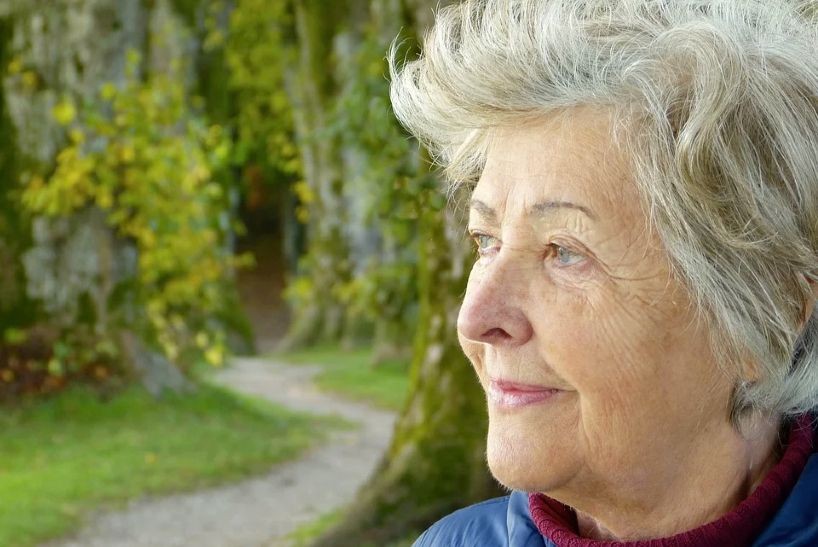
Falls can also have psychological consequences. Those affected may lose confidence in their own body. They feel unsafe as soon as they leave their home and may isolate themselves.
They may even restrict their own mobility within their own four walls. This inactivity in turn has a negative effect on the musculoskeletal system and muscle strength. This further increases the risk of injury in the event of a fall and a vicious circle begins.
Muscle strength decreases with age anyway, which is why it is important not to accelerate this process through inactivity. The reduction begins from around the age of 50 and is around one to two percent per year.
What intervention options are available in Spitex to prevent falls in old age?
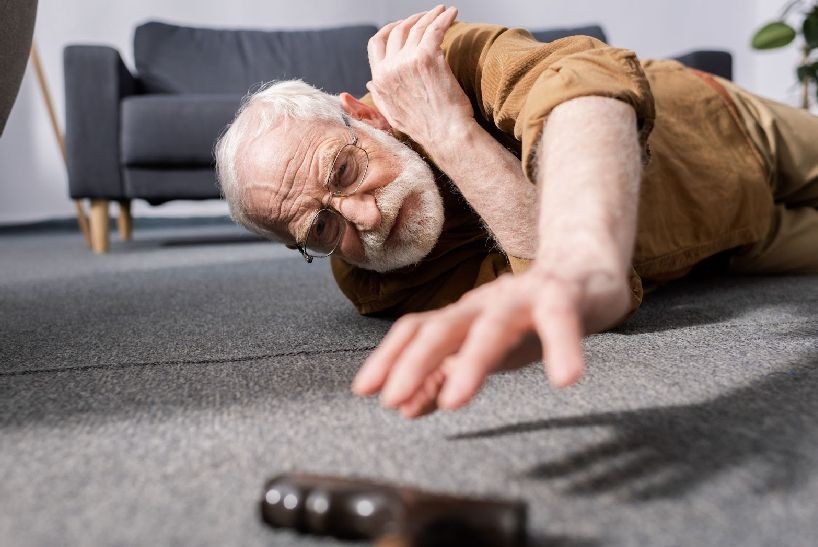
Fall prevention has a significant impact on clients' quality of life. Possible measures include
- Environmental adaptations
- Wearing special shoes
- Use of aids in everyday life such as walking aids
- Promoting strength and balance as part of special courses
It is the task of Spitex nursing staff to acquire the necessary knowledge to provide comprehensive advice to clients. They need the expertise to recognize people with an increased risk of falling and to initiate the appropriate interventions.
If necessary, they request additional necessary structures and justify them professionally. This results in cross-professional collaboration, for example with medical specialists or therapists. This is essential for effective intervention. All those involved then agree on a joint approach based on applicable guidelines and standards.
An insight into the StoppSturz campaign
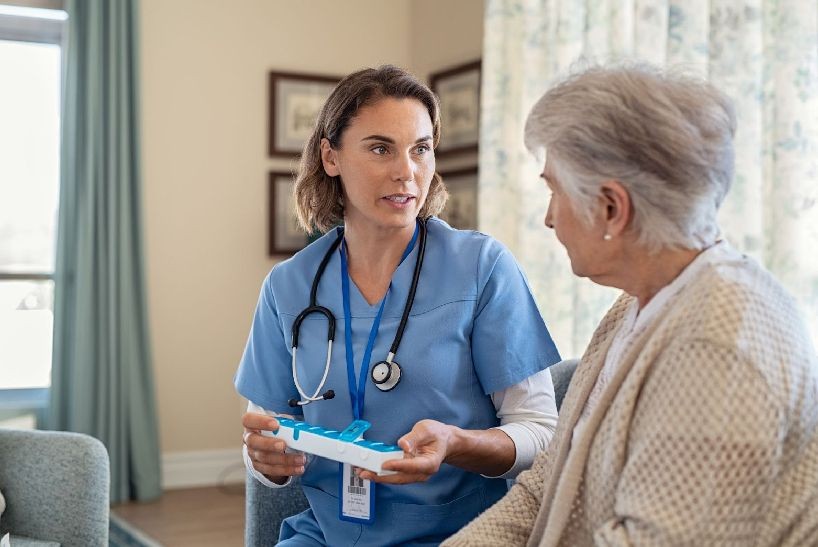
The StoppSturz project is interprofessional and cross-cantonal. It aims to establish high-quality fall prevention for groups of people at increased risk. This is done in close cooperation with the specialists at the Spitex organizations.
If the staff recognize certain alarm signs of an increased risk of falls in a client, a risk assessment is carried out. They carry this out on the basis of the clinical picture and their own nursing experience. The professionals classify the individual risk into a traffic light system that shows which further measures are necessary.
If the risk of falling is low, StoppSturz does not require any further clarification. Fall-prevention exercise programs that train gait safety, balance and strength are conceivable.
In the case of a moderate risk, however, the specialists take a history of falls. This enables them to identify the causes and individual risk factors. Appropriate measures can then be taken to reduce the risk.
If there is a high risk of falling, a multifactorial assessment is carried out in addition to the medical history. Both steps provide a comprehensive nursing picture of the client and follow-up measures can be individually tailored.
Would you like to find out more about Spitex work for people at increased risk of falling? Or are you still looking for the right organization? Then please do not hesitate to contact us.
